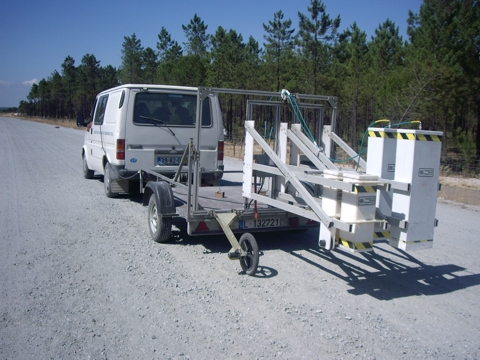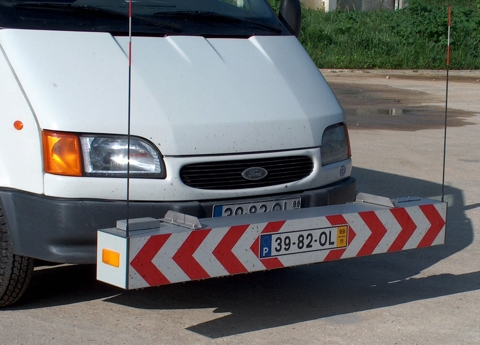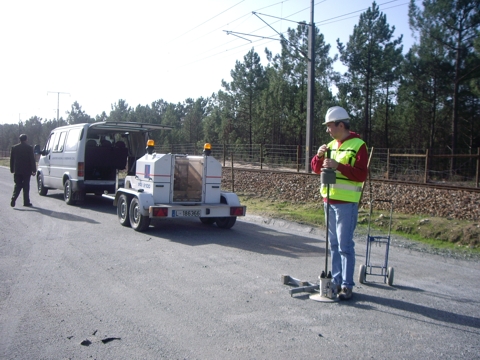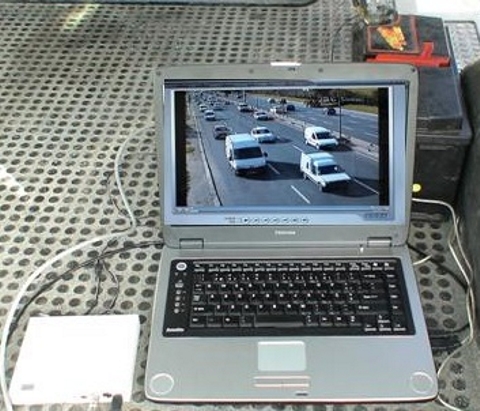|
At the time of a new LNEC reorganization, in 1979, the importance of the actions that had been previously undertaken by this sector in the field of road research was dully recognized and emphasized. The Transportation Networks Department (DVC) was then created, which comprised: the Road Geotechnics Division, the Road Pavements Division and the Traffic and Road Safety Division. From the work achieved by this Department until 1990, special mention is made of studies about: the rheological behavior of soils and aggregates under the action of repeated loads; the use of industrial by-products in road construction; the characterization and use of geosynthetics; the mechanical behavior of bituminous mixtures and due consideration of that behavior in pavement design; the methods for pavement evaluation as regards structural and surface conditions; the characterization of the behavior of traffic in the road network; the relations between road characteristics and accidents; the automation of road and railway geometrical design; the development of accident data bases and road reference systems.
|
|
The Department during the 90’s
At the beginning of the 90s, a major activity in road construction was under way in Portugal, following a revision, in 1985, of the National Road Plan, which introduced significant changes to the previous national road network. By then, after Portugal had become a member of the European Union, huge investments were dedicated to the road sector. As a result, there was an increase in research needs and in other activities in this domain within the scope of LNEC.
Accordingly, the Transportation Department was refurbished in order to respond to the demands posed to LNEC. In particular, two specialized laboratories were installed: the Laboratory for Geotextile Testing and the Laboratory for Pavement Material Testing (PAVMAT), which made it possible to improve the support provided to the road construction industry. Eventually, the Road Geotechnique Division was extinguished and its assignments were entrusted to the Geotechnique Department.
During this decade, also important co-operation agreements were established between LNEC and national institutions, either from the public administration or from universities with significant roles in the transportation area.
The participation in joint European projects was also initiated. For this purpose, the admission of LNEC as member of both the FEHRL ("Forum of European National Road Research Laboratories”), in 1990, and the FERSI ("Forum of European Road Safety Research Institutes”), in 1992, proved to be most valuable. As a result of this significant participation, in particular in projects under the EU R&D Framework Programs, several important international scientific and technical meetings were held at LNEC, as for example, the International Conference on "Traffic Safety on Two Continents”, in 1997.
|
|
The Transportation Department in the XXI Century
Within LNEC Planned Research Program for 2001-2004, the activity of the Transportation Department was focused on the program titled "Transport Infrastructures – Roads, Airports and Railways – Construction Technologies, operation of road transport infrastructures and quality of life”, in which new research topics were introduced, as for example, the treatment of railway platforms and the evaluation of environmental external costs of transports.
Following the approval, in 2002, of a new legal Statute for LNEC, some organizational changes took place in this Department, which was then named as Transportation Department (DT), having similar competences as before and a structure composed of two divisions: the Road and Airport Infrastructures Division (NIRA); and the Planning, Traffic and Safety Division (NPTS). A third division was created in 2007, the Railway Infrastructures Division (NIF), aimed at gathering and developing knowhow in this area.
| 
|
In 2005, the 25th Anniversary of the Department was commemorated, which included a number of initiatives, among which the publication of the book "Transportation – 25 Years”.

| The present LNEC Statute, approved in 2013, has produced alterations in the Organization structure of LNEC, which have also affected the DT; the activities performed in this Department became concentrated on two Units: the Transport Infrastructures Division (NIT) and the Planning, Traffic and Safety Division (NPTS). Throughout the first decade of the XXI Century, an intensive activity has been pursued at DT, both within its traditional main areas, such as pavements and road traffic safety, and within more recent areas, such as transports planning and economy and sustainable mobility. In 2010, LNEC became a member of ECTRI ("European Conference of Transport Research Institutes”), which gathers research organizations in the various transport areas and in the different transport means, at European level.
|
Besides the planned research projects, a number of studies under contract are performed at the Department. Many of them are developed within protocol agreements with both public and private bodies in the field under consideration, which are extended to other countries, especially to the African countries whose official language is Portuguese (PALOP).

| 
|
DT collaborates also with other LNEC department units, in particular in interventions of this laboratory as regards projects within the field of transports. Particular reference is made to the participation of this Department in the coordination and execution of studies delivered by LNEC to the Ministry of Public Works, Transports and Communications (MOPTC), as refers to the location of the New Lisbon Airport, in 2007, and to the location of a Third Crossing over River Tagus in Lisbon Metropolitan Area. More recently (2014-2015), mention should be made to the conduction of the environmental assessment process concerning the Portuguese "Strategic Plan for Transports and Infrastructures” (PETI 3+) for the Ministry of Economy.
The researchers at DT are involved, as well, in other scientific and technical activities, such as the participation in national and international technical commissions and work groups.
|
 Transportation Department
Transportation Department
 Transportation Department
Transportation Department